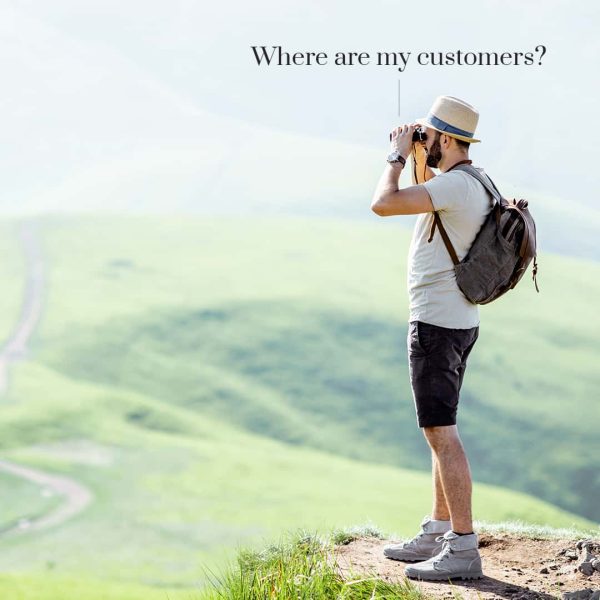As a huge advocate for Facebook advertising, it is becoming harder to justify to operators why this platform is still a very important one because of all the data restrictions put in place over the years.
While I do agree more protection is required for us all, it is becoming extremely hard to track a customer’s journey from start to finish. In fact, in our industry, it is now pretty much impossible.
To add more complexity to reaching your customers, those of us in the European Union will now have an option to subscribe to Facebook and Instagram to make the platforms ad free, meaning anyone who does so will never see your ads.
With all these restrictions in place, is Facebook still a viable option for tour operators? In this article, I will explain the pros and cons of marketing with Meta in the EU.

Facebook introduces a paid for, ad-free service
Meta has announced that, beginning in November, European Union members using Facebook and Instagram will have the option to access versions of these platforms without advertisements, at a monthly cost. This move aligns with the EU’s strict data privacy regulations.
Desktop browser users will be subject to a monthly fee of €9.99. On the other hand, individuals using the services through apps on devices running Apple’s iOS or Google’s Android will incur a fee of approximately €12.99 per month — a price increase that accounts for the app stores’ in-app purchase fees.
What does this mean for us in the EU? If we want ad free platforms on both desktop and mobile, we would need to pay €22.98 per month for the privilege.
Do you manage multiple accounts? Up until March, all linked Facebook and Instagram accounts will be covered by the cost. After that, Meta will start charging €6 for each extra web account and €8 for smartphone accounts.
After a ruling by the European Union’s highest court that the corporation cannot use personal information to target individuals with personalised adverts without first obtaining their approval (which I agree with), Meta is now offering a subscription alternative.
Will Europeans pay for an ad-free Facebook?
I have doubts that many would pay a subscription for an ad-free account in this current form, but some will. I feel it is too expensive for most people and the EU think the same as it was reported earlier this month that European regulators were examining the extent of the fees and if they were too high for individuals who wish to avoid being targeted by advertisements.
If the price was to come down to say €5 per month, that is when I see many opting in. This would be devastating for businesses looking to market to potential customers.
I can actually see this fee being incorporated into the Meta Verified program in future.
The main issue I see with this is that you will be unable to run retargeting campaigns to existing customers as they may have this option switched off. That is the main difference between all the other recent changes and restrictions that have been put in place.
10 Potential Issues for Marketers with Meta’s New Facebook Paid Subscription
1. Restrictions on Identifier for Advertisers (IDFA)
This update led to restrictions on accessing data from the Identifier for Advertisers (IDFA), which is a unique identifier used for targeted advertising.
2. Opt-in Tracking
Users on Apple devices running iOS 14 or higher are now prompted to opt-in or opt-out of tracking by applications, affecting not just Facebook but other platforms like Instagram, Snapchat, TikTok, and Pinterest as well.
3. Aggregated and Delayed Data
There’s a process that restricts, aggregates, and imposes a delay on actions performed by the user within mobile apps or websites for advertising platforms like Facebook.
4. Targeting and Tracking Changes
The update brought about limitations in targeting and tracking for Facebook Ads, affecting key advertising metrics like return on ad spend and cost per purchase.
5. Reporting Challenges
Due to the iOS 14 update, advertisers have encountered challenges in getting accurate reporting, with issues like failing to see conversions on Facebook ads reporting despite making sales.
6. Impact on Ad Performance
Advertisers have experienced a downturn in Facebook and Instagram ad campaign performance across the board, with negative impacts in key areas such as targeting, reporting, and optimization.
7. Further Targeting Restrictions
Facebook introduced more targeting restrictions in 2022, such as removing certain ad targeting options related to health, sexual orientation, and cultural specifics (amongst others).
8. Event Limitation and Conversion Optimization Windows Deprecation
There’s an 8-event limitation on each domain, requiring advertisers to rank them in order of importance within Ads Manager, along with the deprecation of conversion optimization windows【20†(Portent)】.
9. Sharp Decline in Traffic and Audience Size
Advertisers observed a sharp decline in reported traffic and returning users from Facebook ads on mobile devices, along with a decline in the size of website-based custom audiences.
10. Data Reporting Delays and Inaccuracies
Results seemed to be dropping off, data reporting is delayed, and tracking could be inaccurate due to the update.
Although the exact percentage of users who turn off cookie tracking may vary by region within the EU, the average is around 30-40%. In Germany, it is 49%! In the UK, it is around 29% that reject cookies and in the US it is a huge 68%!
Is Meta still a viable platform to run ads on?
Facebook has approximately three billion monthly active users as of the second quarter of 2023, whilst Instagram is estimated to have over one billion monthly active users worldwide in 2023. Even if 20% of users in the EU pay the subscription to Facebook, which I doubt will happen at the current price point, the potential to reach new customers is still huge.
Again, some destinations may be worse affected than others, but generally speaking, you should still be able to run successful ad campaigns to potential customers.
There is another way to look at it:
You may end up having better-performing campaigns as those who do subscribe probably would not be your customers anyway, leaving you with a customer happy for you to advertise to.
If you are advertising to a destination that may have a high opt-in rate, then you may need to start reevaluating your business and the demographics you target. Keep an eye on your campaigns over the next 3 months and see how they perform, taking action accordingly.
Use server-side tracking on your Facebook pixel to regain some data
Facebook’s server-side tracking — also known as CAPI (Conversions API) — is part of its suite of tools aimed at helping businesses measure and optimise the performance of their advertising campaigns on the platform.
Unlike client-side tracking, where data is collected directly from the user’s browser, server-side tracking involves sending data from the advertiser’s server to Facebook’s servers. This method of tracking is often seen as more reliable and secure since it’s less prone to issues like browser restrictions, ad blockers, and cookie consent preferences that can interfere with data collection on the client side.
Additionally, the gradual phasing out of third-party cookies in many browsers has further amplified the importance of server-side tracking. By shifting the data collection process to the server, advertisers can bypass many of the challenges associated with client-side tracking, ensuring more accurate and comprehensive data collection. This, in turn, allows for better analysis, optimization, and overall improved performance of advertising campaigns on Facebook.
CAPI is not free however; it is a separate paid service.
You can run some booking platforms through the likes of Zapier to push bookings to Facebook’s pixel to manage server-side tracking. This is the cheapest option I have found; it is also a lot easier to set up than an AWS server for example.
There is still a downside however
Due to the nature of booking platforms in our industry, most of which are widgets on a page, you still can no longer track if a customer clicked on an ad, navigated around your site and then booked.
As your booking platform is from a different domain, Facebook will not link that person to that booking. Even if your widget is on your website domain, it is still treated as a separate source from it. Cross-platform and cross-domain tracking no longer works the way it used to.
The only way to track a full booking process is to have a custom booking flow built on your website. Some well-known booking platforms do offer an API to allow you to do this, Palisis TourCMS and Rezdy are two that spring to mind, but there are not many. It can also be very expensive to build.
Conclusions
In an ever-evolving digital landscape, Meta’s platforms continue to hold a pivotal position in the realm of marketing and advertising. With a massive user base spanning across various demographics, they provide a fertile ground for brands to interact with potential customers. These platforms are adept at facilitating meaningful engagements at every stage of the consumer’s purchase journey, from awareness to consideration and, ultimately, to conversion.
Moreover, when integrated within a broader digital marketing strategy that includes Google Ads and other advertising channels, Meta’s platforms can significantly enhance the overall reach and impact of campaigns. This multi-channel approach not only ensures a wider audience reach; it also provides multiple touchpoints for consumers, thereby amplifying the chances of conversions.
However, the efficacy of advertising on Meta’s platforms in today’s scenario requires a nuanced understanding of the target demographics and a creative approach to messaging. It’s not just about reaching a vast audience; it is also about reaching the right audience with a message that resonates. In light of the various data privacy measures and ad tracking restrictions, advertisers need to exhibit creativity in how they segment their target audience and craft their messaging. This might entail exploring unconventional demographics or devising messages that stand out in a crowded digital space.
Furthermore, leveraging the insights garnered from other advertising channels like Google Ads can provide a more holistic understanding of consumer behaviour and preferences. This data can be instrumental in refining the targeting and messaging strategies on Meta’s platforms, ensuring that the advertising content is both relevant and engaging.
While the digital advertising landscape may pose certain challenges, the potential for achieving meaningful interactions and conversions on Meta’s platforms remains substantial. Advertisers who are willing to adapt to the changing dynamics, think creatively in terms of targeting and messaging, and adopt an integrated approach to digital advertising are well-positioned to extract significant value from their advertising efforts on Meta’s platforms.

